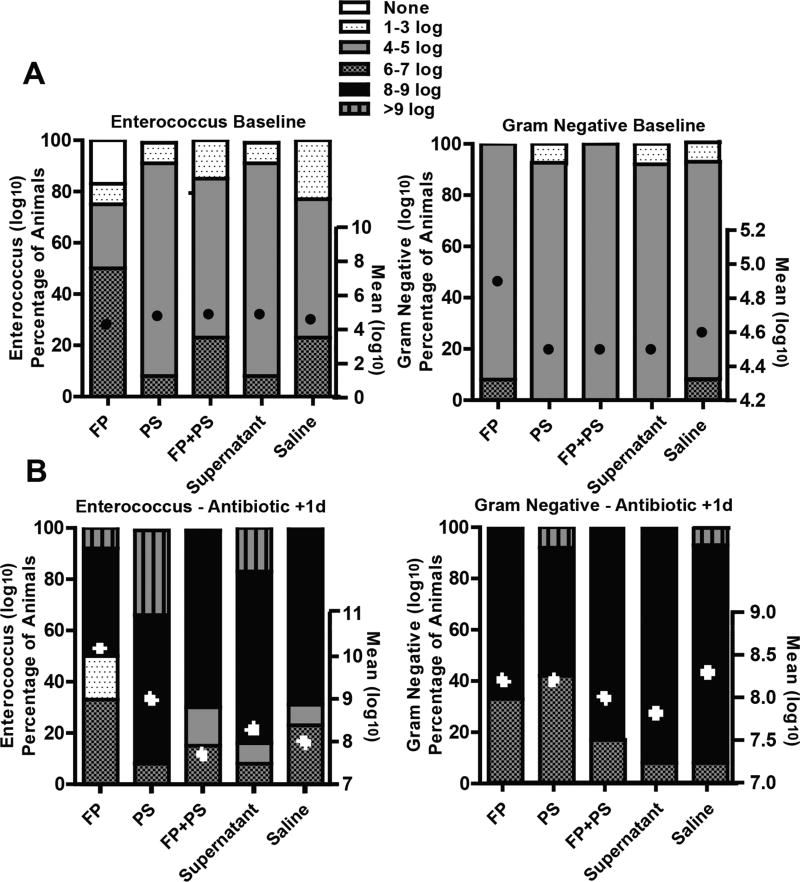Figure 1.
Effect of antibiotic treatment on bacterial overgrowth. Mice were randomized into groups and supplemented daily with Faecalibacterium prausnitzii (FP), potato starch (PS), FP+PS, supernatant, or saline. Mice were treated with daily subcutaneous injections of clindamycin (1.4 mg/d) for 3 days. Following transfer to clean cages, fresh feces were collected, and concentration of enterococcus and gram-negative bacteria was measured by plating serially diluted samples on selective agar at (A) baseline before antibiotics and (B) 1 day after last dose of antibiotic. Data are presented as mean log10 CFU/g ± SEM and percentage of animals in each group with range of log10 CFU/g set as none, 1–3, 4–5, 6–7, 8–9, and >9 log10 CFU/g. n = 12–13 animals/group.

